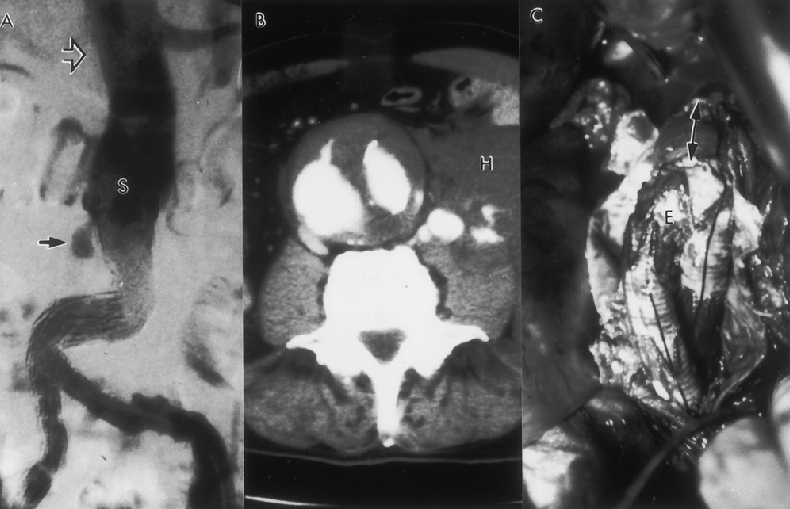
Figure 10. (A) Type 1 endoleak (arrow) developed 24 months after endovascular graft repair. This endoleak was due to migration of the proximal portion of the stent-graft (S). Note the excessive kinking of the limb of the graft as a result of distal migration. The open arrow denotes the location where the proximal stent was deployed initially. (B) Computed tomography scan reveals an endoleak. In addition, the aneurysm had ruptured and a retroperitoneal hematoma (H) can be seen. (C) Open conversion was performed on an urgent basis. The proximal part of the graft was excised and the remainder of the endovascular graft (E) was bridged to the proximal aneurysm neck with a short segment of standard graft (arrows).
